


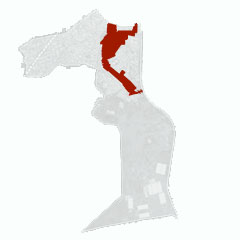


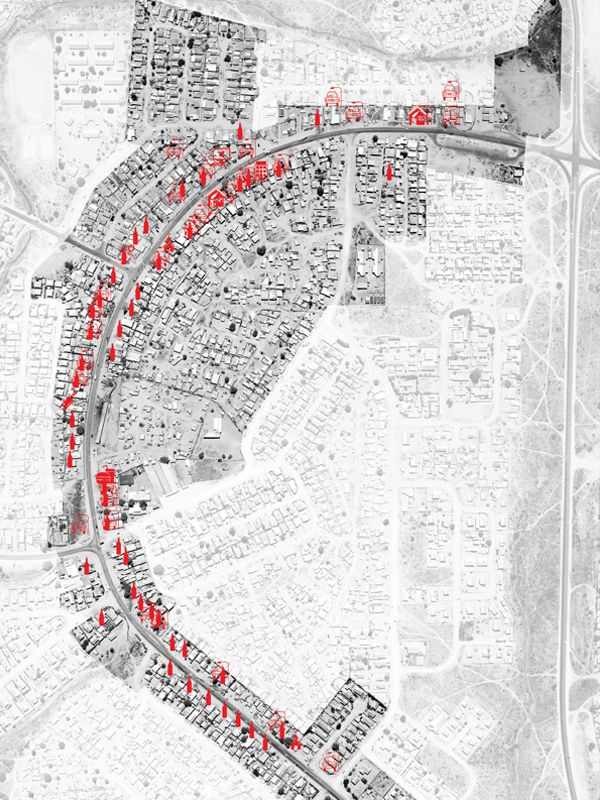 MICRO-ENTERPRISE SURVEY 2008
MICRO-ENTERPRISE SURVEY 2008
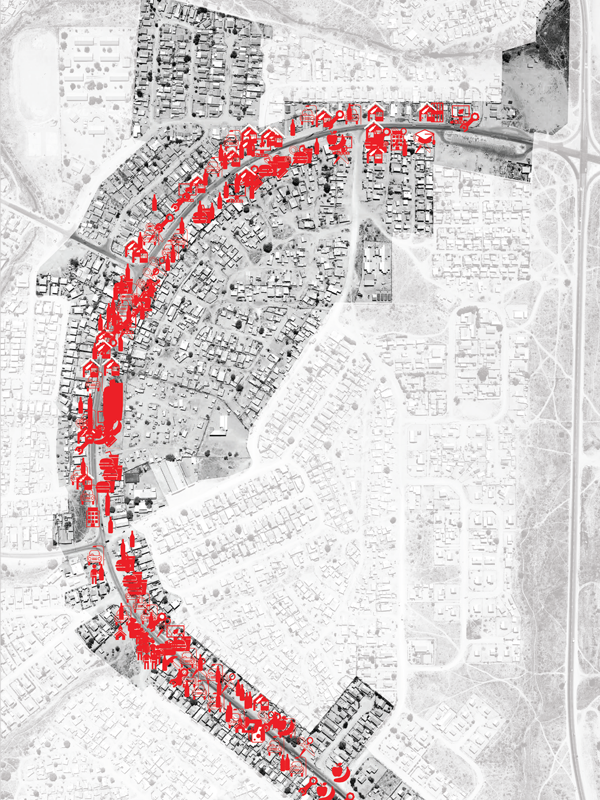 MICRO-ENTERPRISE SURVEY 2016
MICRO-ENTERPRISE SURVEY 2016

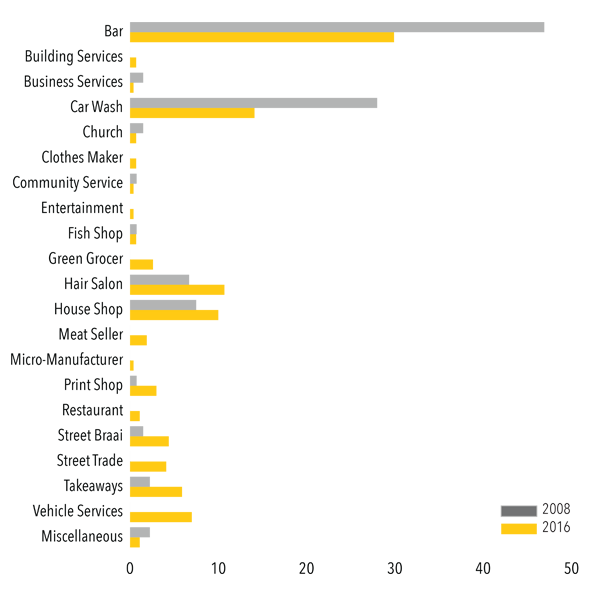 ENTERPRISE NUMBERS/CATEGORIES AS PERCENTAGE OF ALL ENTERPRISES, 2008 vs. 2016
ENTERPRISE NUMBERS/CATEGORIES AS PERCENTAGE OF ALL ENTERPRISES, 2008 vs. 2016
 PERCENTAGE OF ENTERPRISE CATEGORY LINKED TO BARS
PERCENTAGE OF ENTERPRISE CATEGORY LINKED TO BARS

 A. FIRST FIX
The accompanying diagram illustrates the original infrastructure that informed the properties along Eveline Street.
A. FIRST FIX
The accompanying diagram illustrates the original infrastructure that informed the properties along Eveline Street. B. EARLY TRANSFORMATIONS
Early responses to the original infrastructure sought to optimise and appropriate wherever possible.
B. EARLY TRANSFORMATIONS
Early responses to the original infrastructure sought to optimise and appropriate wherever possible. C. TRANSFORMED STREETS
Over time, these small incremental changes result in a dramatic change to the street creating a diversity of uses.
C. TRANSFORMED STREETS
Over time, these small incremental changes result in a dramatic change to the street creating a diversity of uses. HAND WASHING STATION
HAND WASHING STATION
 OVERHANG (ENCROACHMENT)
OVERHANG (ENCROACHMENT)
 CCTV ON STREET LIGHT POST (PUBLIC INFRASTRUCTURE)
CCTV ON STREET LIGHT POST (PUBLIC INFRASTRUCTURE)
 SURFACE TREATMENT
SURFACE TREATMENT
 DISPLAY OBJECTS
DISPLAY OBJECTS
 PERMEABLE FENCE
PERMEABLE FENCE
 STREET LIGHTS AND KAPANO MARKET (PUBLIC INFRASTRUCTURE)
STREET LIGHTS AND KAPANO MARKET (PUBLIC INFRASTRUCTURE)
 SIGNAGE
SIGNAGE
 SPEEDBUMP (PUBLIC INFRASTRUCTURE)
SPEEDBUMP (PUBLIC INFRASTRUCTURE)
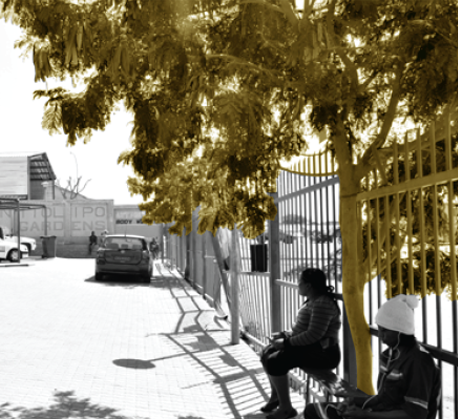 TREE (SHADE)
TREE (SHADE)
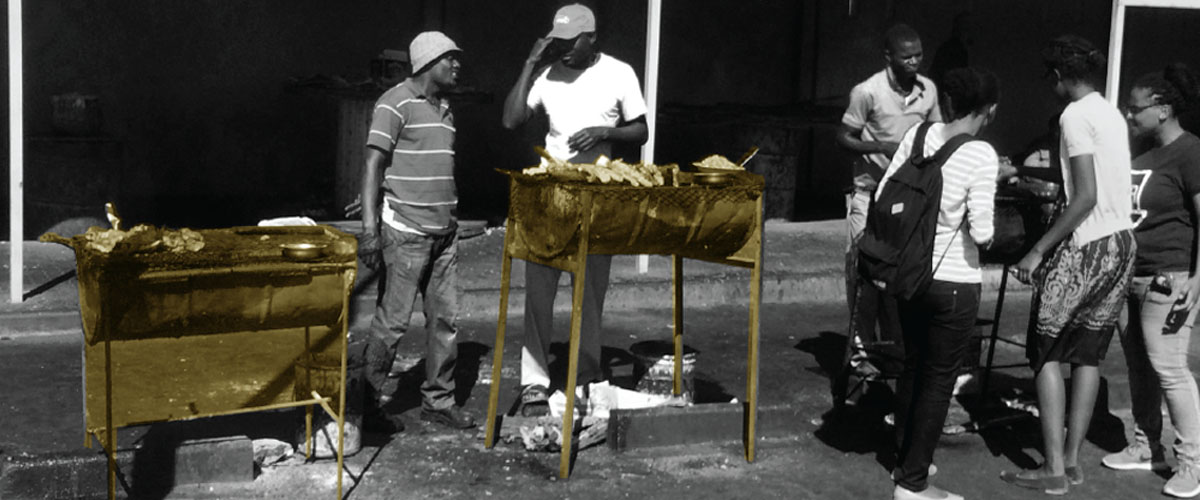 KAPANO BRAAI STANDS
KAPANO BRAAI STANDS
Social Transformation Social transformation has also occurred on Eveline Street, resulting in a uniquely configured urban setting. Commercial life is closely embedded in social life and made public through the relationship to the street. This constructs new forms of surveillance and public entrepreneurship.
Social transformation has also occurred on Eveline Street, resulting in a uniquely configured urban setting. Commercial life is closely embedded in social life and made public through the relationship to the street. This constructs new forms of surveillance and public entrepreneurship.